DIY Decor: Crafting Dollhouse Miniatures for Your Child
Welcome to the enchanting world of dollhouse miniatures, where creativity knows no bounds and imagination takes center stage! Crafting these tiny treasures is not just a fun pastime; it's a fantastic opportunity for you and your child to bond while developing essential skills. Have you ever watched your child's eyes light up at the sight of a beautifully crafted dollhouse? Imagine the joy of creating that magic together! In this article, we will dive deep into the delightful process of crafting dollhouse miniatures, exploring everything from choosing the right materials to engaging your child in a fun and educational DIY project.
When it comes to crafting dollhouse miniatures, selecting the appropriate materials is crucial. The right materials not only enhance the aesthetic appeal but also ensure durability and ease of use. Common options include:
- Wood: Ideal for sturdy structures, wood can be easily cut and painted, making it a favorite among miniature enthusiasts.
- Cardboard: A budget-friendly option, cardboard is perfect for creating walls and furniture. It's lightweight and easy to manipulate.
- Clay: Great for crafting unique accessories, clay allows for endless creativity. It can be molded into various shapes and painted once dry.
By experimenting with different materials, you can discover which ones resonate best with your child's crafting style, making the experience even more enjoyable!
Having the right tools can dramatically improve your crafting experience. Here are some essential tools you’ll need:
- Cutting Tools: These are fundamental for precise miniature crafting.
- Adhesives: Essential for assembling your creations.
- Paints and Brushes: For adding those finishing touches.
Equipping yourself with these tools will set the stage for a successful crafting adventure!
Cutting tools are the backbone of any miniature crafting project. Whether you’re slicing through wood or trimming cardboard, having the right tool for the job is essential. Here are some popular cutting tools:
- Scissors: Perfect for lightweight materials like paper and thin cardboard.
- Craft Knives: Ideal for precision cuts, especially in thicker materials.
Be sure to follow safety tips when using these tools, such as keeping blades sharp and cutting away from your body, to ensure a smooth crafting experience.
Understanding the differences between scissors and craft knives can help you choose the best tool for your project. Scissors are fantastic for quick cuts and larger pieces, while craft knives offer precision for detailed work. Think of scissors as the friendly giant, easy to wield but not always accurate, whereas the craft knife is like a skilled artisan, perfect for intricate designs.
Cutting mats are a must-have for any crafting session. They protect your surfaces and provide a non-slip area for cutting. Using a cutting mat not only enhances safety but also prolongs the life of your cutting tools by preventing dulling. It’s like giving your workspace a cozy blanket!
Choosing the right adhesives is essential for durability. There are various types of adhesives available, including glue sticks, liquid glue, and hot glue guns. Each has its own set of advantages depending on the materials you’re using. For instance, hot glue is fantastic for quick bonding, while liquid glue offers a more permanent solution.
After assembling your dollhouse miniatures, consider adding finishing touches such as paint, varnish, or decorative elements to give your creations that polished, professional look. Think of it as putting on the final coat of nail polish – it just completes the look!
A well-planned layout enhances the visual appeal of your dollhouse. Start by sketching a rough design on paper, considering space, themes, and color schemes. A harmonious layout can transform your miniature world into a captivating environment. Remember, it’s like setting the stage for a play – every detail counts!
Choosing a theme for your dollhouse can spark creativity and guide your crafting process. From classic Victorian to modern minimalist styles, the possibilities are endless. Think about what your child loves – perhaps a cozy cottage, a bustling city apartment, or even a whimsical fairy tale castle. Each theme offers unique opportunities for creativity!
Proper arrangement of furniture and accessories brings your dollhouse to life. Consider the flow of each room and how your child envisions their miniature world. It’s all about creating a cozy atmosphere where stories can unfold. Just like arranging furniture in your home, the layout can make a significant difference in the overall feel.
Involving your child in crafting dollhouse miniatures can enhance their creativity and fine motor skills. It’s not just about the end product; the journey is equally important! Encourage your child to express their ideas and preferences throughout the process, making it a collaborative project that fosters bonding and teamwork.
Working on collaborative projects fosters bonding and teamwork. Whether it’s building the dollhouse or decorating the rooms, each step can be a shared experience that strengthens your relationship. Think of it as a mini-adventure where both of you are co-pilots navigating through creativity!
Encouraging imaginative play is vital for child development. Crafting dollhouse miniatures can inspire storytelling and imaginative scenarios, enhancing your child's cognitive skills. As they play with their creations, they’re not just having fun; they’re developing critical thinking and problem-solving abilities. It’s like opening a door to a world of endless possibilities!
Q: What age is suitable for children to start crafting dollhouse miniatures?
A: Children as young as 5 can start with simple projects, while older kids (8+) can handle more complex tasks.
Q: What materials are best for beginners?
A: Cardboard and foam board are excellent beginner materials due to their ease of use and availability.
Q: How can I make this project more educational?
A: Incorporate lessons on measurements, colors, and even history by choosing specific themes related to different eras.

Choosing the Right Materials
When it comes to crafting dollhouse miniatures, selecting the right materials is crucial. The materials you choose can greatly affect the durability, appearance, and overall quality of your miniatures. Imagine building a tiny world that not only looks good but lasts through countless play sessions! So, what materials should you consider? Let's dive into some popular options.
First up, we have wood. This classic material is perfect for creating sturdy and elegant pieces. Whether you opt for balsa wood, which is lightweight and easy to cut, or a more robust option like plywood, wood allows for intricate designs and a professional finish. You can create everything from furniture to structural elements, making it a versatile choice for any miniaturist.
Next, we have cardboard. This is a fantastic option for beginners or for those looking to create larger pieces without breaking the bank. Cardboard is easily accessible and can be transformed into delightful miniatures with a little creativity. Just think about how you can use it to craft walls, roofs, and even furniture! Plus, it’s lightweight, making it easy to move your dollhouse around.
Then there's clay, which opens up a whole new world of possibilities. Polymer clay, for instance, can be molded into various shapes and baked to create durable miniatures. This material is perfect for creating detailed accessories like food items, plants, and even tiny figurines. The vibrant colors and textures that clay offers can really add character to your dollhouse.
Now, while these materials are fantastic, it’s also important to consider your child’s age and skill level when choosing. For younger kids, materials like foam or felt might be more suitable, as they are safer and easier to manipulate. On the other hand, older children might enjoy the challenge of working with wood or clay. The key is to ensure that the materials you choose not only match the desired aesthetic but also provide a safe and enjoyable crafting experience.
In summary, when choosing materials for your dollhouse miniatures, consider the following:
- Wood: Durable and elegant, great for structural elements.
- Cardboard: Affordable and easy to work with, perfect for beginners.
- Clay: Excellent for detailed accessories and unique designs.
By selecting the right materials, you’ll set the stage for a successful crafting journey that not only enhances your child’s creativity but also results in stunning dollhouse miniatures that can be cherished for years to come!

Basic Tools for Miniature Crafting
When diving into the enchanting world of crafting dollhouse miniatures, having the right tools is like having a treasure map in hand—it guides you through the creative process and ensures a successful journey. Whether you're a seasoned crafter or a beginner, understanding which tools to use can elevate your crafting experience and help you create stunning miniatures that will delight your child. So, let's explore the essential tools you’ll need to embark on this fun-filled adventure.
First and foremost, cutting tools are fundamental for achieving precision in your miniature crafting. You wouldn't want to create a beautiful piece only to have uneven edges, right? Among the most popular cutting tools are scissors and craft knives. Each has its strengths and ideal applications. For larger pieces of cardboard or thick paper, a good pair of scissors works wonders. However, when it comes to intricate cuts or delicate materials like balsa wood, a craft knife is your best friend. But remember, safety first! Always use cutting mats to protect your surfaces and keep your blades sharp.
Now, let’s talk about the various types of cutting tools. A craft knife, also known as a hobby knife, is perfect for detailed work. It allows for intricate designs and fine cuts that scissors simply can’t achieve. On the other hand, scissors are great for quick snips and general cutting tasks. When using these tools, always ensure you have a cutting mat underneath. This not only protects your table but also provides a stable surface, reducing the risk of accidents.
Understanding the differences between these two tools can greatly influence your crafting process. Scissors are straightforward and easy to use, making them ideal for beginners. They come in various shapes and sizes, which can be tailored to your specific needs. Craft knives, while requiring a bit more skill, offer unparalleled precision. If you’re working on a project that demands intricate details, a craft knife is the way to go. Just remember to handle it with care, as those blades are sharp!
Cutting mats are not just an accessory; they are essential for any crafter. They protect your work surface from scratches and cuts, ensuring your crafting area remains tidy and safe. Moreover, many cutting mats come with grid lines, which can help you measure and align your materials accurately. Investing in a good quality cutting mat can make a significant difference in how smoothly your crafting sessions go.
Once you have your pieces cut and ready, the next step is to bring them together using the right adhesives. The choice of glue can affect the durability and appearance of your miniatures. For paper and cardboard, a simple white glue or glue stick can suffice. However, for heavier materials like wood or plastic, you might want to consider a stronger adhesive like hot glue or wood glue. Always test your adhesive on a scrap piece first to ensure it doesn't warp or damage your materials.
Finally, don't forget about the finishing touches! Paints, varnishes, and other decorative elements can transform your miniatures from simple crafts into stunning works of art. A little bit of creativity goes a long way, so don’t hesitate to experiment with different colors and finishes to achieve the look you desire.
Q: What are the best materials for crafting dollhouse miniatures?
A: The best materials depend on your project's requirements. Common options include wood, cardboard, and polymer clay. Each material has its unique properties and can be used for different effects.
Q: Can children use cutting tools safely?
A: Yes, children can use cutting tools with supervision. It's essential to teach them proper techniques and ensure they use safety equipment, such as cutting mats and protective eyewear.
Q: How can I encourage my child to get involved in crafting?
A: Involve your child by assigning them specific tasks based on their age and skill level. Make the process fun by allowing them to choose colors and themes, and celebrate their creations together!
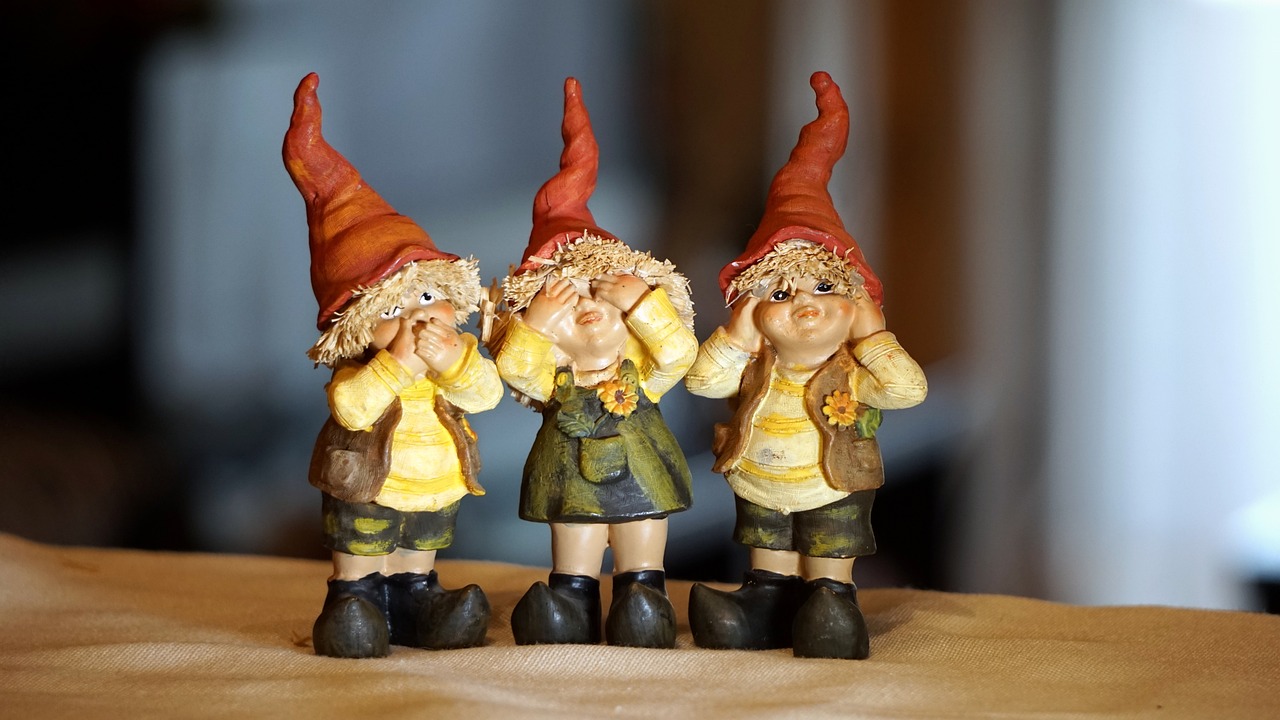
Cutting Tools
When it comes to crafting dollhouse miniatures, are your best friends. They are fundamental for achieving precise cuts and ensuring that your miniatures look polished and professional. Imagine trying to fit a tiny chair into a dollhouse without the right tools—it's like trying to fit a square peg into a round hole! The right cutting tools can make all the difference, transforming a simple piece of material into a stunning miniature masterpiece.
There are several types of cutting tools you might consider for your crafting projects. Each has its unique advantages and is suited for different tasks. For instance, scissors are great for cutting paper and light materials, while craft knives are perfect for more intricate cuts and tougher materials. Knowing when to use each tool can save you time and frustration.
Here’s a quick breakdown of some common cutting tools:
| Tool | Best For | Tips |
|---|---|---|
| Scissors | Paper, cardboard | Use for straight cuts and simple shapes. |
| Craft Knife | Wood, plastic, detailed work | Always use a cutting mat for safety. |
| Rotary Cutter | Fabric, multiple layers | Great for clean, straight lines. |
Safety should always be a top priority when using cutting tools. Here are a few safety tips to keep in mind:
- Always cut away from your body to prevent accidents.
- Keep your work area clear of clutter to avoid mishaps.
- Use a cutting mat to protect your surfaces and keep your blades sharp.
In conclusion, having the right cutting tools at your disposal is essential for crafting stunning dollhouse miniatures. Whether you opt for scissors, a craft knife, or a rotary cutter, understanding their uses and applications will enhance your crafting experience. So, gather your tools, and let your creativity flow as you bring your miniature world to life!

Scissors vs. Craft Knives
When it comes to crafting dollhouse miniatures, the choice between scissors and craft knives can significantly impact your project. Each tool has its unique advantages, and understanding these can help you make the best decision based on your specific needs. Scissors are typically the go-to option for beginners and are great for cutting through lighter materials like paper and thin cardboard. They are easy to handle, and their design allows for quick, straight cuts, making them ideal for simple shapes and less intricate designs.
On the other hand, craft knives, also known as utility knives or exacto knives, offer a level of precision that scissors simply can't match. If you’re working with thicker materials like balsa wood or need to make detailed cuts, a craft knife becomes invaluable. The sharp blade allows for intricate designs and clean edges, which can elevate the quality of your dollhouse miniatures. However, it’s crucial to handle craft knives with care, as they can be dangerous if not used properly. Always cut away from your body, and use a cutting mat to protect your surfaces and extend the life of your blade.
Here’s a quick comparison table to help you decide which tool might be best for your miniature crafting:
| Feature | Scissors | Craft Knives |
|---|---|---|
| Ease of Use | Very easy for beginners | Requires more skill and caution |
| Material Compatibility | Best for paper and thin materials | Ideal for thicker materials and detailed cuts |
| Precision | Less precise | Highly precise |
| Safety | Generally safer | Requires careful handling |
Ultimately, the choice between scissors and craft knives depends on your project requirements and your comfort level with each tool. If you’re just starting out or working on simpler designs, scissors may be the way to go. However, if you’re ready to tackle more complex projects, investing in a good craft knife could open up a whole new world of possibilities for your dollhouse miniatures. Remember, the right tool can make all the difference in achieving those stunning, detailed creations that will truly bring your dollhouse to life!
Here are some common questions about using scissors and craft knives for miniature crafting:
- Can I use regular scissors for all crafting projects? While regular scissors can handle various materials, they may not be suitable for thicker or more intricate cuts. It's best to use specialized scissors or craft knives for those tasks.
- How do I maintain my craft knife? Keep your craft knife clean and replace the blade regularly to ensure optimal performance. Always store it safely to prevent accidents.
- Which tool is better for children? Scissors are generally safer for children, but supervision is necessary. If introducing craft knives, ensure they are used under adult guidance.
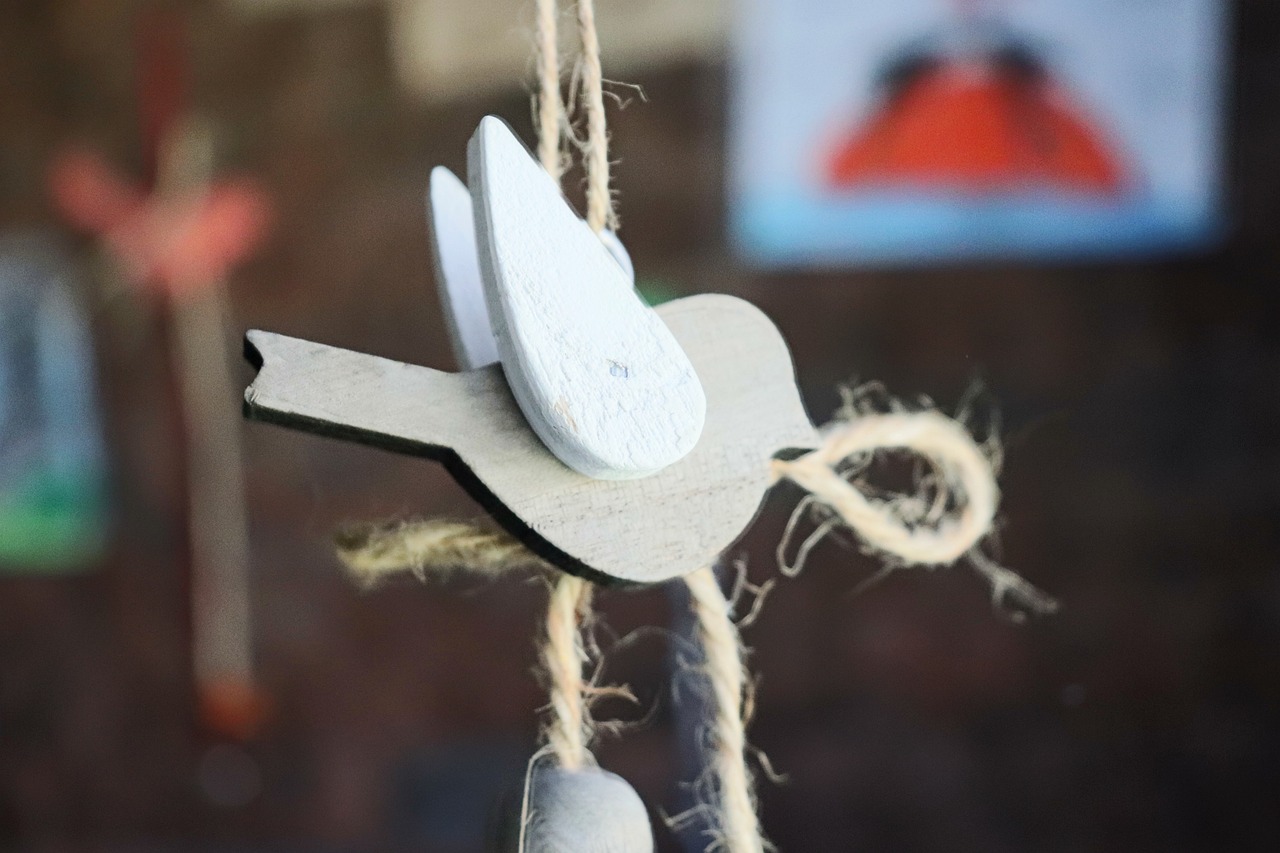
Using Cutting Mats
When it comes to crafting dollhouse miniatures, is not just a suggestion; it's a game-changer! These mats serve multiple purposes, making them an essential tool in your crafting arsenal. First and foremost, they protect your work surface from scratches and cuts, ensuring that your table remains in pristine condition. Imagine working on a beautiful oak table and accidentally slicing it with a craft knife—yikes! A cutting mat acts as a buffer, saving your furniture from such mishaps.
Moreover, cutting mats are designed with a self-healing feature. This means that once you've made a cut on the mat, it closes up, leaving a smooth surface for your next project. This durability is particularly beneficial when you're cutting intricate shapes or multiple pieces, as you won't have to worry about the mat wearing down quickly. Plus, many cutting mats come with measurement grids, which can help you achieve precise cuts and maintain consistent sizing across your miniatures. It's like having a built-in ruler that never gets lost!
Another fantastic benefit of using cutting mats is the added safety they provide. Crafting with sharp tools can be risky, especially for children. A cutting mat offers a stable and secure surface, reducing the chance of slips and accidents. If you're involving your child in the crafting process, having them work on a cutting mat can instill a sense of responsibility while keeping them safe. It's a win-win situation!
When selecting a cutting mat, consider the following features:
- Size: Choose a mat that fits your workspace comfortably. A larger mat can accommodate bigger projects.
- Thickness: Thicker mats tend to last longer and provide better support for cutting tools.
- Grid Design: Look for mats with clear grid lines for easy measurement and alignment.
In conclusion, incorporating a cutting mat into your dollhouse miniature crafting routine can significantly enhance both your experience and the quality of your work. It’s more than just a protective surface; it’s an investment in your crafting journey. So, the next time you gather your tools and materials, don’t forget to lay down that cutting mat—it’ll make all the difference!
- What size cutting mat should I use for dollhouse miniatures?
The size of the cutting mat depends on your workspace and the size of your projects. A larger mat is generally recommended for more flexibility. - Can I use any type of knife on a cutting mat?
Yes, but it’s best to use a craft knife or rotary cutter for the best results. Avoid using excessively heavy or serrated knives. - How do I clean my cutting mat?
Simply wipe it down with a damp cloth. For deeper cleaning, you can use mild soap and water, but ensure it dries thoroughly before storing.
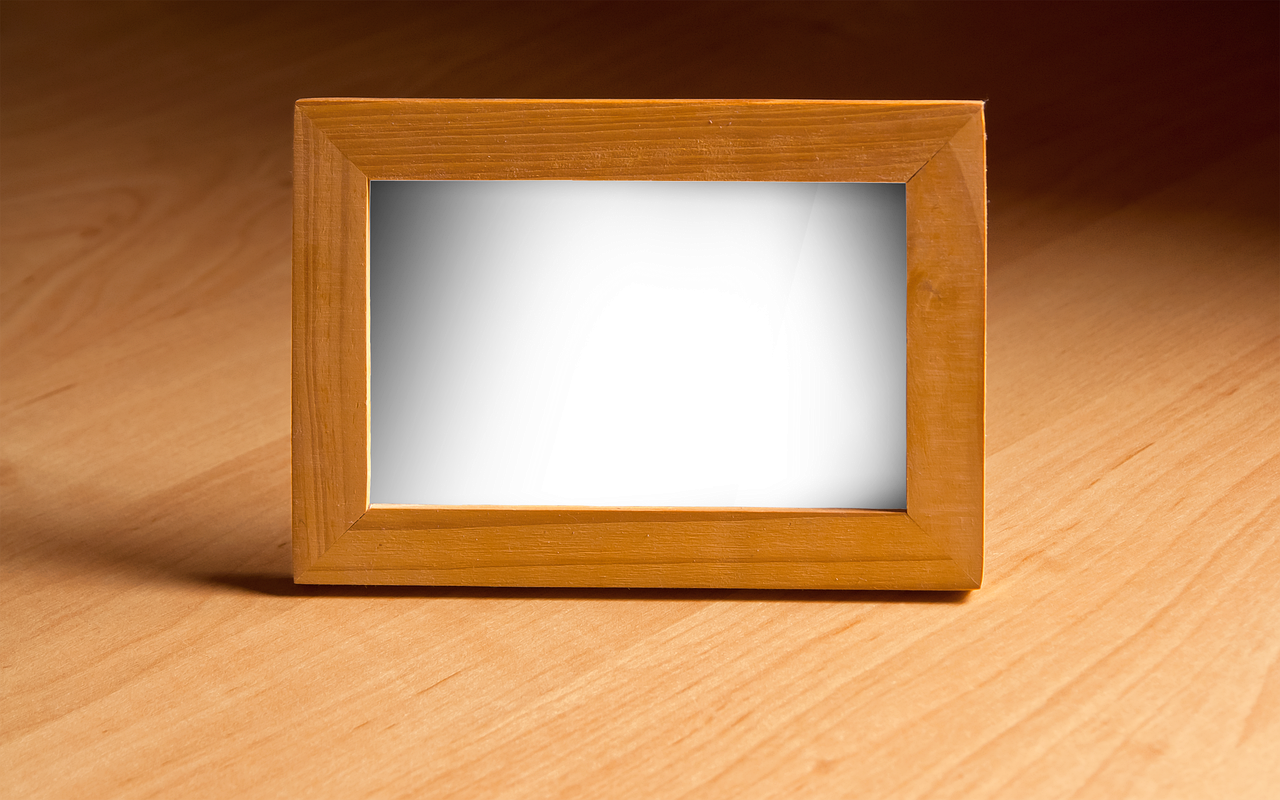
Adhesives and Finishing Touches
When it comes to crafting dollhouse miniatures, choosing the right adhesives is just as crucial as selecting the perfect materials. The adhesive you use can significantly affect the durability and overall appearance of your miniatures. You want your creations to stand the test of time, and the right glue can help achieve that. There are several types of adhesives available, each with its unique properties and ideal applications. For instance, PVA glue is a popular choice for paper and wood, while super glue is perfect for quick fixes and small parts.
One of the key factors to consider when choosing an adhesive is the material compatibility. For example, if you're working with a combination of wood and fabric, you might want to opt for a fabric glue that can bond both materials effectively. Additionally, it's essential to think about the drying time; some adhesives dry quickly and can be challenging to reposition, while others allow for more flexibility. To help you navigate through the options, here's a quick overview of common adhesives used in miniature crafting:
| Type of Adhesive | Best For | Drying Time |
|---|---|---|
| PVA Glue | Wood, Paper | 30 minutes to 1 hour |
| Hot Glue | Quick bonding for various materials | Instant |
| Super Glue | Small parts, quick fixes | 10 to 30 seconds |
| Fabric Glue | Fabric, Wood | 1 to 2 hours |
Once you've selected the appropriate adhesive, the next step is to focus on the finishing touches. These details can elevate your dollhouse miniatures from simple crafts to stunning displays. Consider adding elements like paint, varnish, or even tiny accessories to enrich the visual appeal. For instance, a coat of varnish can give wooden pieces a polished look, while paint can help you achieve that perfect color scheme that ties your miniature world together.
Moreover, don't underestimate the power of accessories. Tiny items like miniature plants, furniture, and even little dolls can breathe life into your dollhouse. These finishing touches not only enhance the aesthetic but also provide opportunities for imaginative play. After all, a dollhouse is more than just a collection of rooms; it's a world waiting to be explored! So, as you craft, remember to take a step back and assess how the elements come together. Are the colors harmonious? Do the accessories fit the theme? These considerations will help you create a cohesive and inviting miniature environment.

Designing Your Dollhouse Layout
When it comes to , think of it as creating a miniature world where every detail counts. A well-planned layout not only enhances the visual appeal of your dollhouse but also makes it a fun and engaging space for imaginative play. Start by considering the space you have available. Is it a single room, or does it have multiple stories? Understanding the dimensions will help you make decisions on furniture placement and accessory arrangement. Remember, a cluttered dollhouse can feel overwhelming, while a well-organized one invites exploration.
Next, let’s talk about themes. Choosing a cohesive theme can spark creativity and guide your design choices. Whether you prefer a classic Victorian style or a sleek modern aesthetic, having a theme can help you select colors, furniture, and accessories that harmonize beautifully. For example, a Victorian dollhouse could feature ornate wallpaper, vintage furniture, and delicate lace curtains, while a modern dollhouse might showcase minimalist furniture with bold colors. The choice is yours, and the possibilities are endless!
One effective way to plan your layout is to sketch it out on paper or use design software. This allows you to visualize how different elements will fit together. Consider creating a table that outlines the dimensions of each room and the furniture pieces you plan to include. This can be a handy reference as you craft your miniatures:
| Room | Dimensions (inches) | Furniture/Accessories |
|---|---|---|
| Living Room | 12 x 10 | Sofa, Coffee Table, Lamp |
| Kitchen | 10 x 8 | Table, Chairs, Stove |
| Bedroom | 10 x 10 | Bed, Nightstand, Dresser |
Arranging furniture and accessories is where the magic happens! Think about how people move through real spaces; you want to create a flow that feels natural. For instance, placing a sofa facing a fireplace can encourage a cozy atmosphere, while a dining table positioned near the kitchen enhances functionality. Don't forget to leave some open space for your child’s imaginative play. You can also use accessories like rugs, plants, and artwork to add personality and warmth to each room. These small details can transform a simple layout into a vibrant and inviting environment.
Lastly, remember that your dollhouse layout can evolve over time. As your child grows and their interests change, so can your dollhouse. Encourage them to rearrange furniture or switch up themes, making the dollhouse a dynamic space that reflects their creativity. By involving your child in this process, you not only enhance their experience but also foster a sense of ownership and pride in their miniature world.
- What materials are best for creating dollhouse furniture? Wood, cardboard, and polymer clay are popular choices due to their versatility and ease of use.
- How can I make my dollhouse layout more interactive? Incorporate movable pieces, like working doors and drawers, to engage your child in play.
- What themes work well for a dollhouse? Classic themes like Victorian, modern, or even fantasy themes can provide a great foundation for your design.
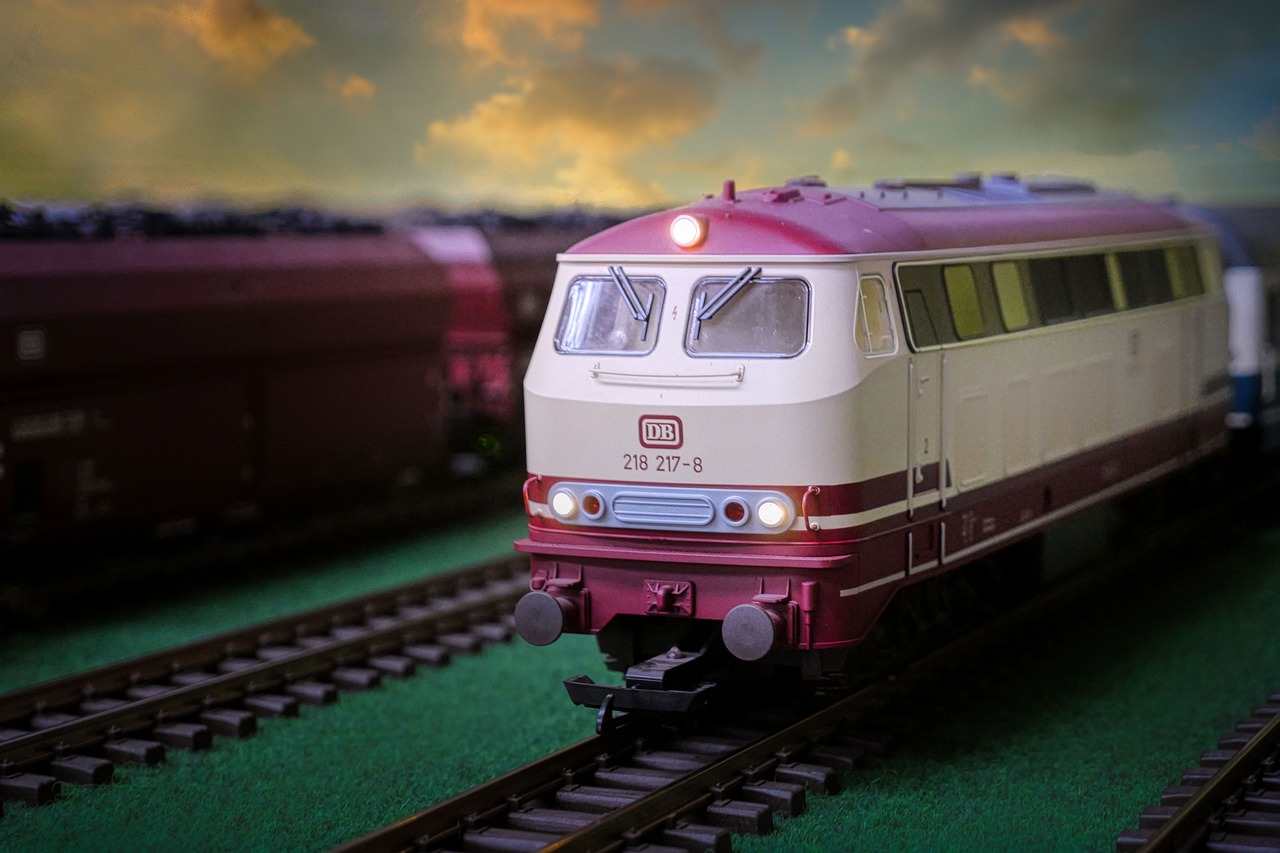
Thematic Inspiration
When it comes to crafting dollhouse miniatures, the theme you choose can set the entire tone for your miniature world. Imagine stepping into a cozy Victorian cottage or a sleek, modern apartment—each theme evokes different emotions and sparks creativity. The key is to select a theme that resonates with both you and your child, making the crafting process enjoyable and engaging.
One popular theme is the Classic Victorian style, characterized by intricate details, rich colors, and ornate furnishings. Think about adding elements like lace curtains, vintage wallpaper, and antique furniture to create a sense of history. This theme not only allows for creativity in design but also provides a fantastic opportunity to teach your child about the Victorian era and its cultural significance.
If you’re looking for something more contemporary, consider a Modern Minimalist theme. This style focuses on clean lines, neutral colors, and functional furniture. It’s a great way to introduce your child to the concept of space and design, as you can discuss how less can be more. You can incorporate simple shapes and bright accents to make the space feel lively while keeping it uncluttered.
For those who love the outdoors, a Garden Cottage theme can be a delightful choice. Imagine a tiny house surrounded by miniature flowers, trees, and even tiny garden furniture. This theme allows for the inclusion of vibrant colors and textures, creating a cheerful atmosphere. You can even craft tiny gardening tools or a miniature birdhouse to enhance the outdoor vibe!
Another exciting option is the Fantasy Realm theme, where imagination knows no bounds. Whether it's a fairy tale castle, a wizard's abode, or a magical forest, this theme invites endless possibilities. Encourage your child to think outside the box—what would a dragon’s lair look like? How about a cozy hobbit hole? This is a wonderful way to blend storytelling with crafting, as you can create characters and scenarios to go along with your miniatures.
To help you get started, here’s a quick table of thematic ideas that might inspire you:
| Theme | Description | Key Elements |
|---|---|---|
| Classic Victorian | Intricate designs and rich colors | Lace curtains, antique furniture, vintage wallpaper |
| Modern Minimalist | Clean lines and functional design | Neutral colors, simple shapes, bright accents |
| Garden Cottage | Outdoor-inspired with vibrant colors | Miniature flowers, tiny furniture, gardening tools |
| Fantasy Realm | Imaginative and whimsical | Fairy tale castles, magical creatures, unique landscapes |
Ultimately, the theme you choose should reflect the interests and creativity of your child. Encourage them to express their ideas and preferences, as this not only makes the crafting experience more enjoyable but also fosters a sense of ownership over their miniature world. Remember, the journey of creating is just as important as the final product, so let your imaginations soar!
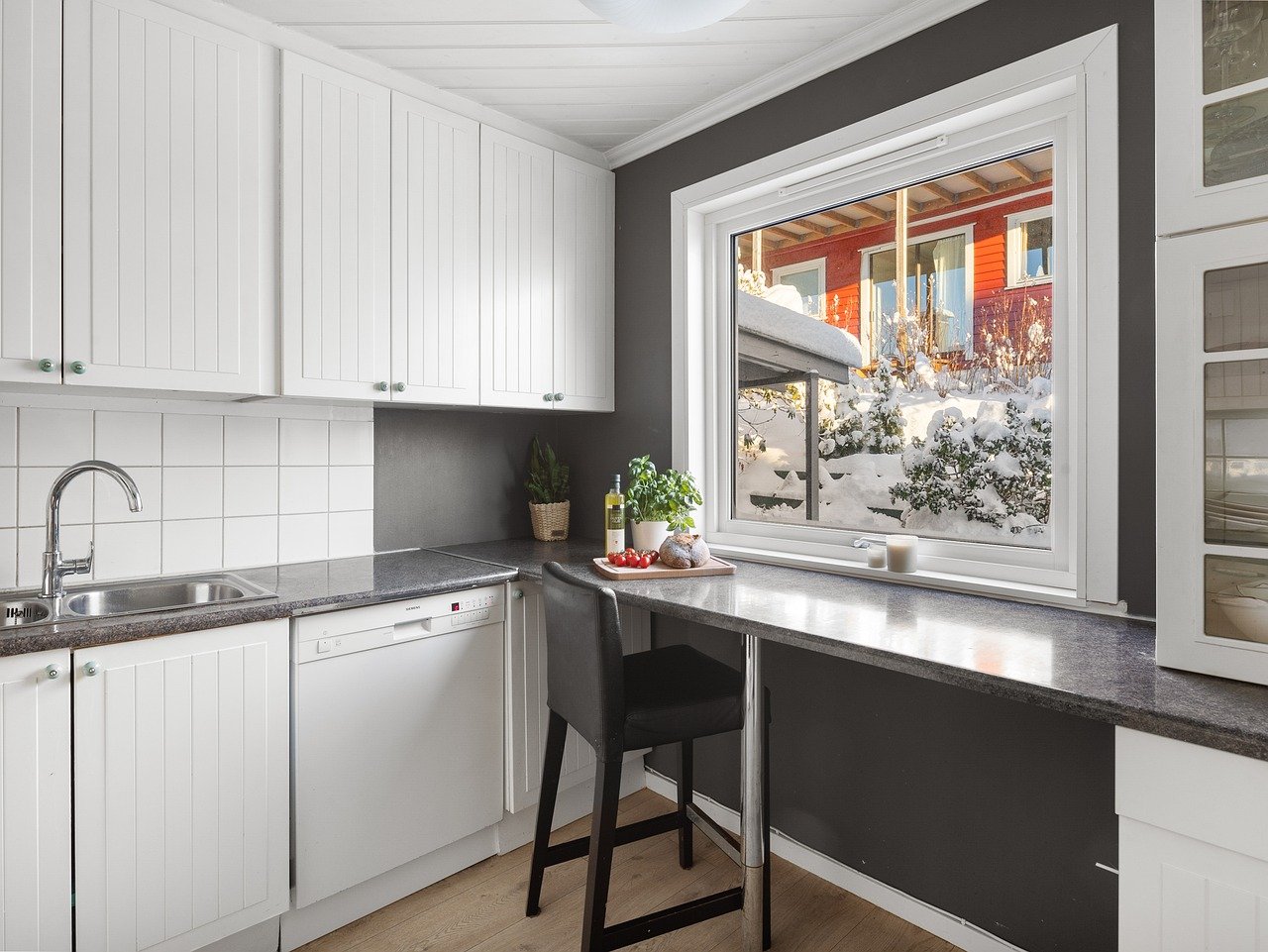
Arranging Furniture and Accessories
When it comes to in your dollhouse, the magic truly begins. Imagine stepping into a miniature world where every piece of furniture tells a story and every accessory adds a touch of personality. The key to creating a captivating dollhouse layout lies in thoughtful placement and a keen eye for detail. Start by considering the scale of each piece; after all, a giant sofa in a tiny room can disrupt the entire aesthetic! It's essential to maintain proportions that feel harmonious and inviting.
Begin by envisioning the functionality of each room. Is it a cozy living room meant for gatherings, or a serene bedroom that promotes relaxation? This will guide your choices in terms of furniture type and arrangement. For instance, in a living room, you might want to place a small sofa facing a fireplace, with a coffee table in the center. This arrangement not only creates a focal point but also encourages imaginative play. Once you have the larger pieces in place, it’s time to sprinkle in the little details—think about adding a rug under the coffee table or a few decorative cushions on the sofa to make the space feel lived-in.
Don't forget the importance of accessories. These are the elements that breathe life into your dollhouse. Consider adding items like books, picture frames, or even a tiny vase of flowers. These small touches can transform a simple room into a warm and inviting space. You might also want to incorporate some themed accessories that align with your overall design concept. For example, if you’re going for a vintage look, consider placing a gramophone or an old-fashioned clock on a shelf. This not only enhances the visual appeal but also sparks storytelling possibilities.
Now, let’s talk about balance and flow. Just like in a well-designed home, it’s crucial to create a sense of balance in a dollhouse. Avoid overcrowding any one area; instead, allow each room to breathe. You can achieve this by leaving some open space, which invites the eye to explore. Additionally, think about the flow from one room to another. Ensure that the arrangement allows for easy movement, as if your miniature inhabitants could stroll from room to room without obstruction.
Lastly, remember that arranging furniture and accessories is a creative process—there are no hard and fast rules. Feel free to experiment! Move things around until it feels just right. You might find that a piece you thought would go in the bedroom looks perfect in the living room instead. Embrace the journey of crafting your dollhouse, and let your imagination lead the way. After all, this is your unique miniature world, and it should reflect your personal style and creativity!
Q: What is the best way to start arranging furniture in a dollhouse?
A: Begin by determining the function of each room. Place larger furniture items first, then add smaller accessories to create a cohesive look.
Q: How can I ensure that the scale of furniture is appropriate for my dollhouse?
A: Always check the measurements of your dollhouse and compare them with the furniture dimensions. Many miniature furniture pieces are designed specifically for standard dollhouse scales.
Q: What types of accessories should I include to make my dollhouse more realistic?
A: Consider adding items that reflect daily life, such as books, plants, kitchenware, and decorative items. These small details can enhance the overall appearance and storytelling potential of your dollhouse.
Q: Is it okay to rearrange furniture after I've set it up?
A: Absolutely! Rearranging furniture is part of the fun. Don’t hesitate to experiment and change things up to keep your dollhouse feeling fresh and exciting.

Engaging Your Child in the Process
Crafting dollhouse miniatures is not just a fun activity; it's an incredible way to bond with your child while nurturing their creativity and fine motor skills. Imagine sitting together at a table, surrounded by colorful materials, as you both dive into the enchanting world of miniature crafting. The joy of creating something together can be a delightful experience that leaves lasting memories. So, how can you make this process engaging for your child? Here are some strategies to consider:
First and foremost, collaborative projects are a fantastic way to foster teamwork and communication. By working side by side, you can encourage your child to express their ideas and preferences. For instance, you could plan a themed dollhouse, such as a cozy cottage or a vibrant city apartment. Let your child take the lead in choosing colors and styles, which not only empowers them but also sparks their imagination. As you craft, ask open-ended questions like, "What do you think this room should look like?" or "How can we make this space feel more inviting?" This dialogue can enhance their decision-making skills and creativity.
Another essential aspect is to encourage imaginative play. Crafting dollhouse miniatures isn't just about the physical creation; it's also about the stories that emerge from them. Once you've built a few rooms, invite your child to come up with characters and narratives. Perhaps they want to create a family of tiny dolls that live in the house, or maybe they envision a pet cat that causes mischief. By integrating storytelling into your crafting sessions, you can enhance your child's cognitive skills and make the experience even more enriching. You might say, "What adventures do you think our little family will have in this house?" This simple question can lead to a myriad of imaginative scenarios.
Moreover, involving your child in the planning phase can be incredibly beneficial. Allow them to sketch out their ideas or create a mood board with cutouts from magazines. This not only helps them visualize their project but also teaches them about organization and planning. You could set up a small table with various materials and let them choose what they want to use. This sense of ownership over the project can transform their crafting experience from a chore into an exciting adventure.
Lastly, don't forget to celebrate the small victories! Every time you finish a piece of furniture or complete a room, take a moment to admire your work together. You could even have a mini “housewarming” party for your dollhouse, where you showcase what you've created. This not only boosts your child's confidence but also reinforces the idea that their efforts are valued. Remember, the goal is not just to create a perfect miniature world but to enjoy the journey together.
| Question | Answer |
|---|---|
| What age is appropriate for children to start crafting dollhouse miniatures? | Children as young as 5 can start with simple projects, while older kids may enjoy more complex designs. |
| What materials are safe for children to use? | Non-toxic glue, cardboard, and wood are safe options. Always supervise younger children with sharp tools. |
| How can I encourage my child’s creativity during the project? | Ask open-ended questions and allow them to choose colors and themes. Encourage storytelling around their creations. |
| Can crafting dollhouse miniatures be educational? | Absolutely! It helps develop fine motor skills, enhances creativity, and teaches planning and organization. |
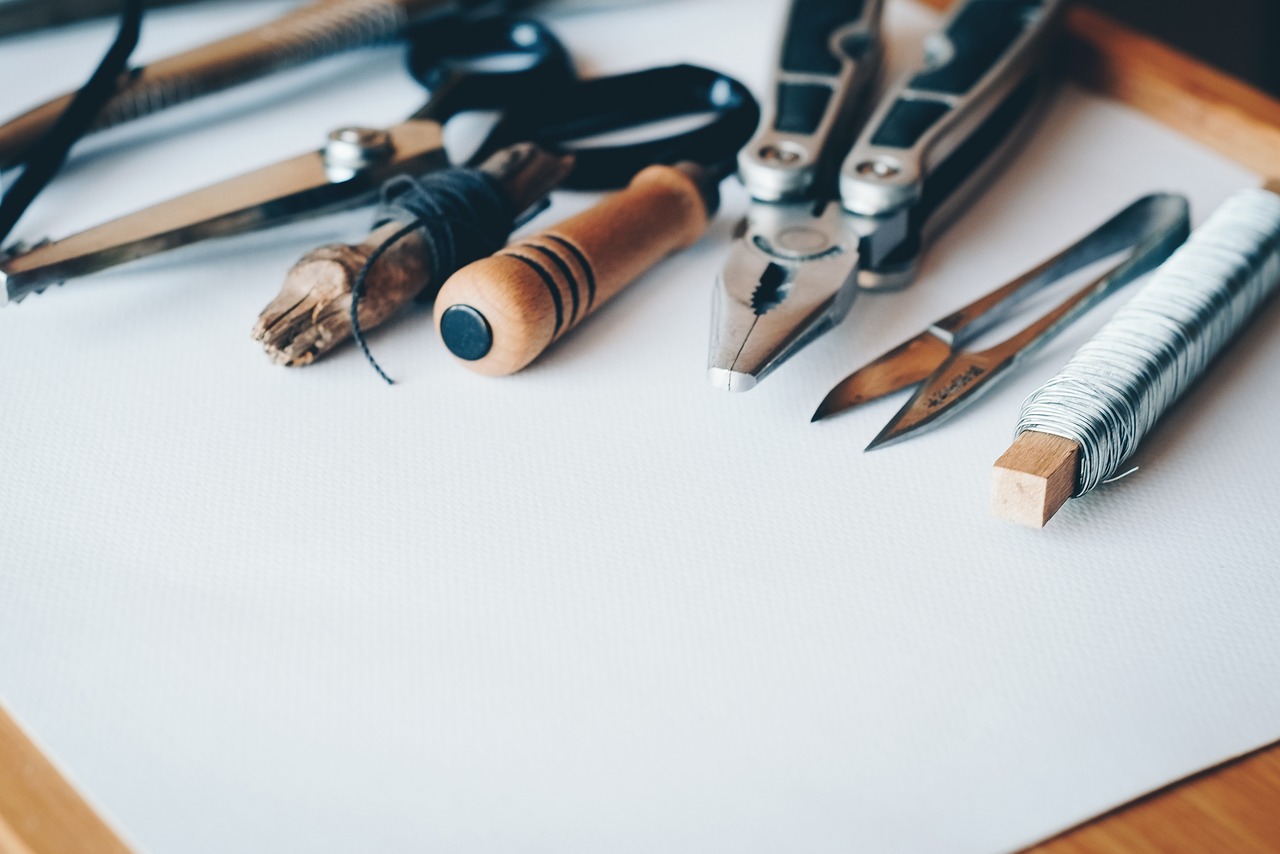
Collaborative Projects
Engaging in with your child can transform the experience of crafting dollhouse miniatures into a cherished bonding activity. Imagine the joy on their face as you both dive into a world of creativity, where every cut and glue becomes a shared adventure. Not only does this foster a sense of teamwork, but it also allows for the exchange of ideas, sparking imagination and enhancing communication skills. So, how can you make the most of these collaborative crafting sessions?
First, consider setting up a designated crafting space. This could be a small table in the living room or a corner in the child's bedroom, adorned with all the necessary materials and tools. Having a specific area dedicated to your projects not only keeps things organized but also builds excitement. You could decorate the space with some of your finished miniatures, creating a mini gallery that inspires further creativity.
Next, think about choosing projects that are suitable for both you and your child’s skill levels. For instance, if your child is younger, you might want to start with simpler projects like creating furniture from cardboard or fabric scraps. As they gain confidence, you can gradually introduce more complex tasks, such as building miniature walls or designing intricate accessories. This gradual approach not only makes the crafting process enjoyable but also instills a sense of accomplishment.
Another fun idea is to create a themed project together. For example, you could decide to craft a miniature kitchen or a garden scene. Discussing the theme beforehand allows your child to express their ideas and preferences, making them feel like a vital part of the process. You can brainstorm together, perhaps even sketching out a rough layout of what you want to create. This not only enhances their planning skills but also encourages them to think critically about space and design.
Moreover, don’t shy away from making mistakes together. If a piece doesn’t fit or a color doesn’t match, turn it into a learning opportunity. Discuss what went wrong and how you can fix it. This approach teaches resilience and problem-solving, vital skills for any child. Plus, it adds an element of fun to the process, as you both laugh off any mishaps.
Finally, consider documenting your crafting journey. Take photos of each stage of your project, from the initial brainstorming to the final touches. This not only creates lasting memories but also serves as a wonderful way to reflect on your creative journey together. You could even create a scrapbook or a digital album that captures your collaborative efforts over time.
In conclusion, are more than just a way to craft dollhouse miniatures; they are a gateway to building lasting relationships and enhancing your child’s skills. By working together, you create a nurturing environment that encourages creativity, communication, and problem-solving. So grab those materials, set up your crafting space, and let the fun begin!
- What age is appropriate for children to start crafting dollhouse miniatures?
Children as young as 5 can start with simple projects, while older kids can handle more complex tasks. - What materials are best for beginners?
Cardboard, paper, and fabric are excellent starter materials, as they are easy to work with and readily available. - How can I ensure my child stays engaged in the project?
Involve them in decision-making, allow for creativity, and keep the projects fun and light-hearted.

Encouraging Imagination
When it comes to fostering your child's creativity, nothing beats the joy of crafting dollhouse miniatures together. It's like building a tiny universe where their imagination can run wild! Engaging in this hands-on activity not only provides a sense of accomplishment but also serves as a springboard for storytelling and imaginative play. Just think about it: each miniature piece can represent a character in a story, a scene from a beloved book, or even a dream home. The possibilities are as vast as their imagination!
As you and your child work on these miniatures, you can encourage them to think outside the box. Ask open-ended questions like, "What kind of adventures do you think happen in this dollhouse?" or "If this room could talk, what stories would it tell?" These questions invite your child to explore their thoughts and feelings, transforming the crafting session into an interactive storytelling experience. It's a beautiful way to merge creativity with critical thinking!
Furthermore, consider incorporating different themes that can inspire imaginative play. For instance, you might create a Victorian-era dollhouse filled with elegant furniture and charming details, or perhaps a modern loft with sleek lines and vibrant colors. Each theme can set the stage for different stories and characters, allowing your child to dive deeper into their imaginative world. You could even make it a fun challenge: have them come up with a story for each room!
In addition to the crafting itself, you can enhance the imaginative play by introducing elements like:
- Miniature figures: These can be anything from tiny dolls to animal figurines, each representing different characters in your child's stories.
- Props and accessories: Items like miniature books, food, or tools can add depth to the play, making each scenario feel more real.
- Story prompts: Create simple prompts or scenarios that your child can use as a starting point for their imaginative adventures.
By surrounding your child with these engaging elements, you are not just helping them create a dollhouse; you are also nurturing their ability to dream, invent, and narrate. This creative process can significantly enhance their cognitive skills, as they learn to visualize, plan, and execute their ideas. Imagine the pride they'll feel as they showcase their unique dollhouse, filled with stories and characters that sprang from their own minds!
Ultimately, crafting dollhouse miniatures together is more than just a fun activity; it's a gateway to a world of imagination. So roll up your sleeves, gather your materials, and let the creative journey begin. You might just discover that the stories you create together are as enchanting as the miniatures themselves!
Q: What age is appropriate for children to start crafting dollhouse miniatures?
A: Generally, children aged 6 and above can start crafting with supervision. Younger children can participate with simpler tasks.
Q: What materials are best for beginners?
A: Cardboard and foam board are excellent for beginners as they are easy to cut and manipulate. As skills improve, you can introduce wood and clay.
Q: How can I ensure safety while crafting?
A: Always supervise your child, especially when using cutting tools. Ensure they wear safety goggles and keep sharp objects out of reach when not in use.
Q: Can crafting dollhouse miniatures help with my child's development?
A: Yes! It enhances fine motor skills, encourages creativity, and improves problem-solving abilities through planning and execution.
Frequently Asked Questions
- What materials are best for crafting dollhouse miniatures?
When it comes to crafting dollhouse miniatures, you have a variety of materials to choose from! Wood, cardboard, and clay are some of the most popular options. Wood is durable and offers a classic look, while cardboard is lightweight and easy to work with. Clay allows for more creativity in shaping unique pieces. Ultimately, the best material depends on your project and desired aesthetic!
- What tools do I need to start crafting dollhouse miniatures?
To kick off your miniature crafting journey, you'll need some essential tools. Cutting tools like scissors and craft knives are crucial for precision. Don't forget about cutting mats to protect your surfaces and keep things safe. Additionally, having a good selection of adhesives will help you secure your pieces together. It's all about making your crafting experience smooth and enjoyable!
- How can I design a captivating layout for my dollhouse?
Designing a captivating dollhouse layout is all about planning! Start by considering the space you have available, and think about a theme that excites you. Whether it’s a cozy cottage or a modern apartment, arranging your furniture and accessories thoughtfully can create a welcoming atmosphere. Remember, a well-planned layout enhances the visual appeal and functionality of your miniature world!
- What are some fun ways to involve my child in this crafting project?
Involving your child in crafting dollhouse miniatures can be a blast! Try collaborative projects where you both create items together, fostering teamwork and bonding. Encourage your child to use their imagination by coming up with stories or themes for their dollhouse. This not only makes the process enjoyable but also enhances their creativity and fine motor skills!
- Can crafting dollhouse miniatures help with my child's development?
Absolutely! Crafting dollhouse miniatures can significantly aid in your child's development. It encourages imaginative play, which is essential for cognitive growth. As they build and arrange their miniatures, they're also enhancing their problem-solving skills and creativity. Plus, it’s a fantastic way to bond and share experiences together!



















